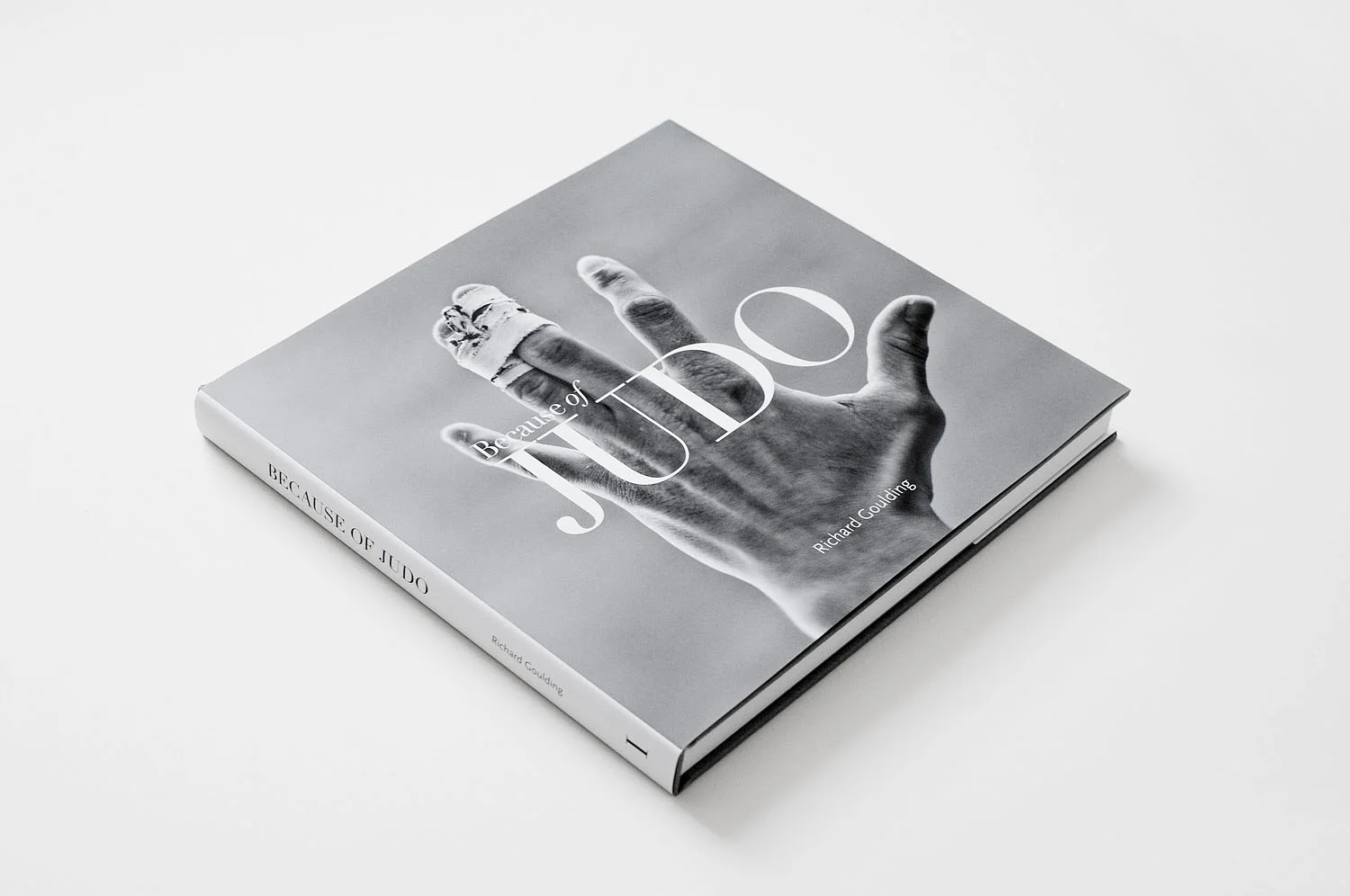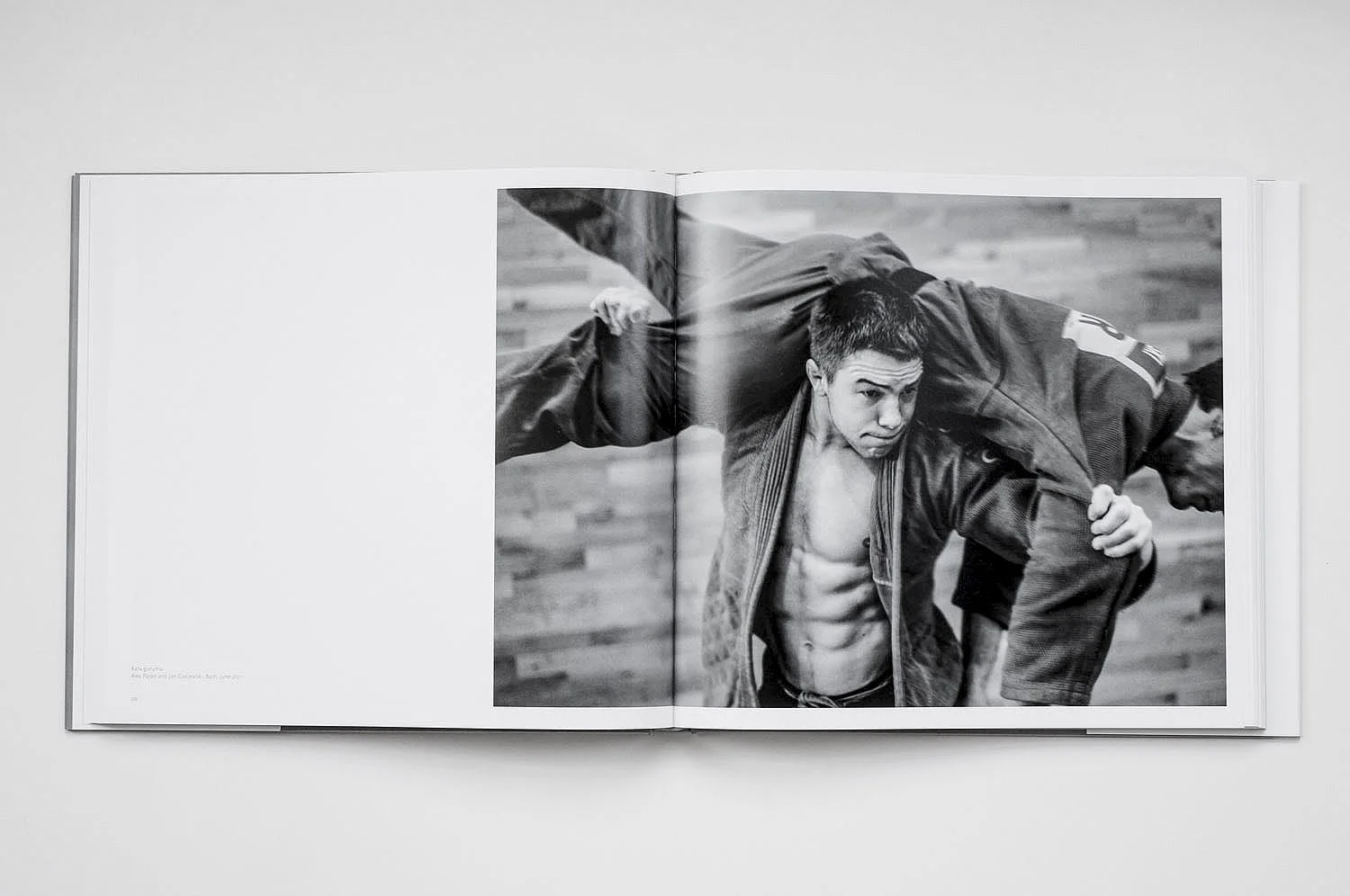BECAUSE of JUDO
"I am not a wealthy man, but because of Judo in my heart I am a millionaire."
Akinori Hosaka 8th Dan Kodokan Judo
Because of Judo is an art monograph limited edition book, and a study of a life in Judo. It is the culmination of a five year photographic project and is a tribute to the late Akinori Hosaka 8th Dan Kodokan Judo. In 1977 I started Judo at Sale Leisure Centre, south Manchester. The instructor was a Japanese man called Akinori Hosaka, I remember lining up with the other beginners to have our finger and toe nails checked, if too long you got a whack with his zori, or you often got a whack and a smile from him even if your nails were short and clean . I was just a recreational player, with no contest record, but over many years we became good friends until sadly Hosaka passed away in 2010. I was his next of kin, he had no family in England, so with close friends we cared for him towards the end.
Before he died Hosaka said to me, “I am not a wealthy man, but because of Judo in my heart I am a millionaire”. This quote and then conversations with his old friends and colleagues inspired me to start photographing the British Judo squad as they prepared for the London 2012 Olympics. The book then evolved to become much more than that. It has become a collection of visual stories about the athletes, their determination to succeed in elite judo, and about the dojo’s in which they train, fight and live. It is also about their coaches, the teachers of judo. It tells a story of life in Judo in this country, but is also a shared story about Judo all over the world. Working on the book, I wanted to learn more about the players before they step on to the contest mat, what is their daily life like, and about the coaches who guide them through victory and defeat. What I discovered was a way of life. And also beauty in a sport that has origins in a brutal battlefield fighting system. The project is underpinned by portraits of the players taken after they have stepped off the mat between randori sessions. And of old school coaches such as Don Werner and Roy Inman. I started the project with respect for the players and coaches, but that quickly changed to admiration and amazement at their dedication, motivating me further to try to show non-judoka what life in Judo is like. I found a unique sub culture of a sport and martial art, British Champions sweeping the mat after training, a family system, rivals for a place in the Olympic team helping those selected, young players and old school judoka, injury after injury and never a complaint, unspoken codes of behaviour, and of course Judo hands.
The book includes words by Neil Adams and the introduction is written by Mark Law author of The Pygama Game.
This five year project is a self funded photographic record of a life in Judo. The printing and publishing has been partly funded by a crowdfunding campaign which saw support from backers all over the world who could see the value in their shared experience in the art of Judo. Now this limited edition book is available for sale on this website.
First edition of the book: Because of Judo by Richard Goulding, with text by Neil Adams MBE, and Introduction written by Mark Law. The book contains 224 pages with 190 black and white images, 308 x 286 mm and weighs 2.2kg shipped The book printing was funded through a Kickstarter campaign, and is not available in bookshops.
Who was Akinori Hosaka ?
He was many things to many people; teacher, coach, mentor, motivator, best man, father figure and friend. Akinori Hosaka was born in Akita Ken in the province of Akita in the north of Japan’s main island on January 17th 1938. He started Judo in High School, and was naturally talented.
At aged 18 he won the Akita Ken Junior Open Championship and then attended the top Judo University of the time: Nihon University, studying law (a fellow student was George Kerr). His Judo regime at this time consisted of training six hours a day, 6 days a week with competitions on most Sundays.
At 20 years old he was a finalist in the 2nd Dan Kodokan Student Championship and was later graded to 3rd Dan in a Kodokan Batsugun Contest, which is a "Winner stays on" line-up, where anyone who beats five or more of their own grade earns a grade promotion. He was very proud of his contest record. At 21 years old he was a finalist in the 3rd Dan Kodokan Student Championship and then at 22 years old fought Isao Inokuma for half an hour in the All Japan University Championships. At the end of the first ten minute round neither had managed to achieve a winning score and so the contest was extended for a further 10 minutes. At the end of which, the situation was still the same so they fought for a further ten minutes at the end of which the decision went to the judges who declared Isao Inokuma the winner (the year before Isao Inokuma had won the All Japan Open weight Championship and would 4 years later go on to take a Gold Medal at the Tokyo Olympics). In 1961, he was promoted to 5th Dan after winning the North-east Japan Championships.
The next chapter in his life is illustrated by the stamps in his passport. He was invited to teach judo in the northwest of England, on just a one year contract. Travelling from Tokyo via Hong Kong he arrived in Manchester in September 1962 and had to sign the city Police alien’s register which only permitted him to work as a judo instructor. Shortly after his arrival, he met with the then British squad and fought and defeated each one, from lightest to heaviest in turn. At the start of each contest, he told his opponent which technique he would use to beat them and did so in every contest, only delaying to make sure there was room on the mat to throw safely. Hosaka remained in the UK for the rest of his life, continuing his work with the BJA and then developing coaches with his ‘fundamental principles of judo’ courses for the BJC.
In his final days in hospital, a nurse said “Mr Hosaka, I need to fill out this form with a few of your details, please can you tell me your religion?” He replied “Judo."
At his funeral a cast of former players unfolded themselves from their cars, hobbled to the crematorium to pay their respects and "thank a man who shaped their lives". Hosaka requested the song Tie a Yellow Ribbon to be played at his funeral, “…. I’ve done my time, I’m coming home….” .
Photographs
Judo is not very good at attracting a new audience. To some its brutal violence, or just pyjama wrestling. Contest judo is only a very small part of the whole, there is a deep culture with reverence to your seniors, old part masters and its Japanese origins. But contest judo is difficult to understand, with a complex list of scoring techniques, penalties and subtle tactics to win a match. What interested me was the path to get to the contest mat, the hours of conditioning of the 'judo body' to ensure you are robust enough to meet in physical contact that was originally a battlefield art designed to kill. Limiting myself intentionally to just basic camera equipment, usually a Leica rangefinder and one lens, the hard back book contains 190 black and white photographs over 228 pages.
BOOKS NEARLY SOLD OUT, SO ONLY AVAILABLE HERE www.richardgoulding.co.uk
Link to the original 2015 Kickstarter campaign here
All images ©Richard Goulding, written permission and a licence to use is require to use any of these images, no social media use permitted.











